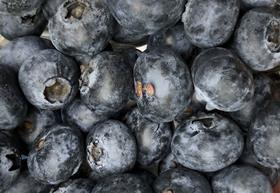
Stepac claims its polyamide-based packaging technology can resolve a common challenge faced by blueberry growers and exporters conducting long-haul shipments to Asia.
According to the Johnson Matthey-owned group, the new Xtend packaging solution preserves the fruit’s protective ‘bloom’ – the natural powdery white wax on the surface of blueberries that reduces evaporation.
The product of years of research and development, the breathable, multilayered packaging has been designed to regulate headspace gas composition and relative humidity. Gary Ward, technical development manager for Stepac, said this significantly reduces the risk of condensation build-up and ensures any condensation formed within the packaging diffuses out.
Ward said polyamide packaging differed from commonly used polyethylene-based modified atmosphere solutions, which minimise weight loss due to their low water vapor transmission rate (WVTR).
“This is important, but the advantage of reduced weight loss is outweighed by the disadvantage that condensation will inevitably form and become trapped in the packaging,” Ward explained. “This free moisture is an enemy of the natural bloom and is highly likely to be washed from the surface of the blueberries making it less appealing to the eye and in fact increases the risk of decay.”
Ward said the packaging technology was likely to appeal to large blueberry suppliers from Latin America targeting high-value Asian markets such as China, where bloomis considered a key quality criteria.
“The preservation of natural bloom is a far more important parameter than slightly lower weight loss,” Ward added. “It is the outward indicator of freshness and translates into higher prices for blueberries in the Chinese market.”
Stepac will showcase its new Xtend packing technology at this year's Fruit Logistica in Berlin, Germany, where it will once again be exhibiting.






No comments yet